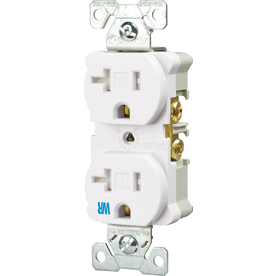I know about this question (I posted an answer to it), but this one's a little more specific.
Consider a weather-resistant outlet, like the ones below:


Notice the first picture has the plug in what most of us would call "right-side-up" orientation; the blades are above the ground pin and it looks like a face. However, the blue WR logo is upside-down when you look at it this way. (It's hard to tell from the pictures, but the TR logos between the blade slots are oriented so that the logo for the receptacle on top of the assembly is right-side up either way.)
The second picture shows a similar plug, oriented so the blue WR label is right-side-up. This places the ground pin above the current-carrying blades. That got me thinking that this was done for a reason, perhaps to get us to mount the plug "upside-down", contrary to most folks' sensibilities, in order to provide the best weather resistance. It makes a certain amount of sense; a plug mounted this way that then gets rained on would have water contact the ground pin or conductors first, and then drip down to one of the powered legs, causing a short to ground that trips the breaker and is somewhat less likely to try to conduct through you.
Are the manufacturers trying to tell us something? Is it preferable, regardless of how you would normally orient a non-WR outlet, to install a WR outlet ground-pin up?

